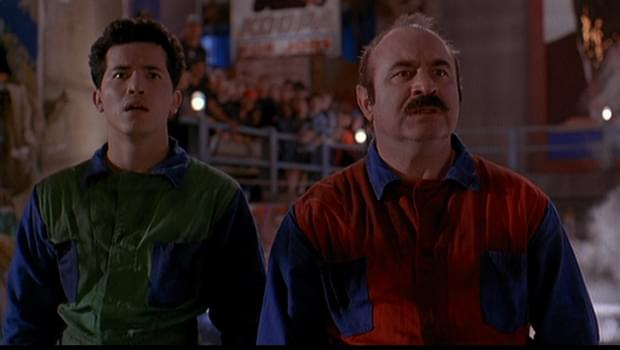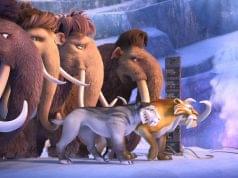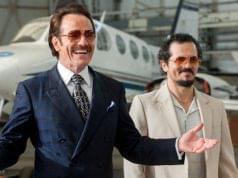
Every time Hollywood makes a new film based on a video game, i.e., every two weeks, I pause for a moment and reflect on the history of this misbegotten genre. All the entries so far have been lousy, including the one that everyone always says is the best one, “Resident Evil.” (You’re wrong. It’s lousy.) But how did it begin? How did a seemingly fruitful source for movie inspiration turn so toxic?
To answer that question, we must look at the very first movie adaptation of a video game, 1993’s “Super Mario Bros.” And here we see that right from the very beginning, this genre sucked. Here was a colorful, mischievous game, full of whimsical characters and entertaining situations, and the Hollywood stink factory managed to take all of the fun out of it. Nintendo gave them a good opportunity, and they whizzed it right down the ol’ pant leg.
As you no doubt fondly recall from the many hours you spent playing it as a child, the video game is about two plumbers who go around getting high on wild mushrooms and stomping on turtles. Occasionally they fling themselves recklessly into pipes and collect coins in the sewers. The game comes from Japan, where these are common activities among the nation’s youth.
The movie takes those basic ideas, carefully considers them, then discards them in favor of random, chaotic loudness and forced, unenjoyable mirth. It is the type of film that Satan would make, if he were meaner.
We begin on a dark and stormy night in Brooklyn, where a gaggle of nuns finds an abandoned satchel on their church’s doorstep. You figure the satchel has a baby in it, but in fact it contains a giant egg, the kind Fred Flintstone used to eat. The nuns take this in stride, as if discovering the fertilized ova of prehistoric creatures is commonplace in their line of work. Moments later, the egg hatches, revealing not a bird or reptile but a human baby. Again, the nuns are fine with this. Rather than hastily crossing themselves as they pitch the infant into a fire, or running in terror down the steps of the church and relinquishing their faith forever, they simply go on with their lives.
The baby grows up to be a relatively normal woman named Daisy (Samantha Mathis), a New York University student who likes to go on archaeological digs as long as they don’t involve leaving the city. One day she meets the Mario brothers, Luigi (John Leguizamo) and Mario (Bob Hoskins) — yes, their names are Luigi Mario and Mario Mario — and has just begun a harmless flirtation with Luigi when, wouldn’t you know it, she gets kidnapped by goons and taken to another dimension. Conveniently, this other dimension is located underneath Brooklyn, so the Mario brothers can pursue her without having to deal with rush-hour traffic on the BQE.
The other dimension is ruled by King Koopa (Dennis Hopper, eagerly searching for his career’s low point), a ruthless tyrant who hates all mammals. Wait a minute, you say. Isn’t he a mammal himself? He certainly has all the outward indications of being a mammal: hair, sweat glands, a four-chambered heart, etc. But no, as it turns out, King Koopa and all of his subterranean subjects are reptilian in nature. They came to exist 65 million years ago when the meteorite that wiped out the dinosaurs split the world into two dimensions, one for mammals and one for reptiles. Now they have evolved into … well, into really mammalian-looking reptiles. (What, all the money they spent on this movie and they couldn’t give the underworld denizens scaly skin or something?)
Anyway, the reason Koopa has ordered the kidnapping of Daisy is that she has a chunk of the original meteorite that she wears as a really tacky necklace, her only reminder of the parents she never knew. (She never knew them because they abandoned her, but I guess she’s nostalgic anyway.) Koopa wants to reunite the chunk with the meteorite and thus merge the two dimensions, allowing him to take over the world.
To aid him in his world-domination scheme, he has created a device that can cause an organism to de-evolve back to a lower state. He has a whole army of soldiers that used to look like him (i.e., pretty much human) before he de-evolved them to look like really tall humans with tiny turtle heads. These de-evolved beings are very stupid. His machine can also evolve creatures, though, and make them smarter. When he does this to his two idiotic goons, Iggy (Fisher Stevens) and Spike (Richard Edson), their newfound intelligence takes the form of them now saying “affirmative” instead of “yes,” which of course isn’t really a sign of intelligence at all. Is it possible that no one involved in making the film had ever actually met an intelligent person before? Not only is it possible, it is likely.
Also, if you had a device that would make things more evolved and intelligent, why wouldn’t you use it on yourself? And if your goons’ idiocy has been a thorn in your side for years, why wouldn’t you have used it on them sooner? And why would you intentionally create a stupid army instead of a smart one? These are the questions that you will not be asking yourself as you watch “Super Mario Bros.” You will be too busy trying to figure out what any of this has to do with the video game, and possibly also attempting to escape from the restraining device that has been used to force you to watch the film. Remember that in the case of most knots, struggling against them only makes them tighter. Try to find a cutting implement, such as the sharp edge of a desk, but make sure to do it when your captor’s back is turned.
The movie bears so little resemblance to the video game that I’m tempted to think their matching titles is simply a coincidence. “What?!” the executives at Buena Vista Pictures must have exclaimed. “There’s a video game called ‘Super Mario Bros.’ too? Huh. Weird. Is the game about a cruel reptilian dictator who hates mammals even though he looks like one himself and who also hates evolution and wants to merge two dimensions and rule the world? No? Then we’re safe. Whew. Tell the lawyers to stand down.”
— Film.com





